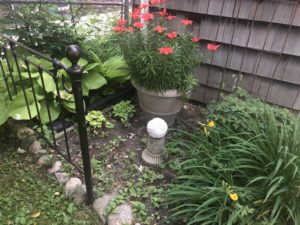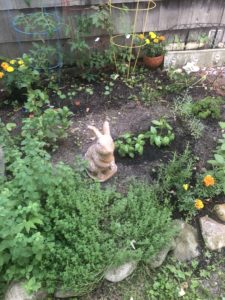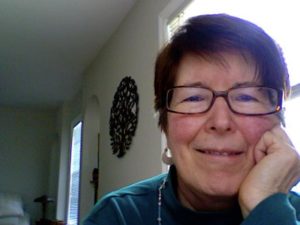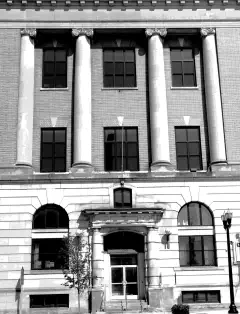By Jan Worth-Nelson
When I’m dying, will I be able to mutter to my grieving loved ones, hey! I’m glad I lived in Flint?
I know, I know, macabre thought…but as fall crisps in with its inevitable melancholy reminders of the cycle of life and death, I find myself ruminating on mortal matters.
And this column seems to want to be about two answers to my big end-of-life question: first, the evolution of romantic illusions about city life; and second, my most cherished discoveries about what I love here now, in a very rich and satisfying present.
I always wanted to love the city I live in. While things have gotten much better, in my view, it hasn’t always worked here. Anybody who’s lived in Flint for more than a decade understands the ongoing exasperations and – to be fair – hard-won rewards of trying to love this place.
Back in the 80s, when I arrived as a single woman with persistently romantic notions about city life, I was broke and attracted to the downtown arts scene that thrived amid the demolition of old edifices and the ruination of familiar landmarks. We were mostly all poor and drank way too much: I lived in a walkup on Avon Street, making do with my meager social worker pay and writing poems delivered in boozy backrooms of bars that no longer exist. So far so good, eh?

Maxine Street backyard beauty. (Photo by Jan Worth-Nelson)
Now some of the Flint kids born during that searing era are grownups themselves writing about it: Kelsey Ronan, Connor Coyne, Sarah Carson, Tim Lane, Cat Batsios, among others. Four of those five recently performed their work, (with a dozen huge splay-legged nudes behind and around them – am I the only one not cosmopolitan enough to note how distracting – and interesting — that was?) at Buckham Gallery.
I felt exceedingly old, but fascinated, listening to their thrilling, vivid take on how Flint’s fractured, often violent, haunting years of the late 1900s and early 2000s imprinted themselves on these observant Flint kids.
What they took out of their Flint childhoods, as I was careening from bar to bar with my sheafs of erotic angst, marriages and love of trees, is something quite different. Some of them are annoyed anti-capitalists and just coming to terms with neighborhood-based PTSD. But also they are deeply, deeply attached to their material. The adults raising them weren’t always reliable…the realities of their environments were wrenching – but also, these kids were free range survivors, exploring abandoned corners of arsoned schools, the back doors of tagged railroad cars, the weeds and racoons around the river. There’s a sense of relishing the entropy and rot, which imbued some of them with brash realism and self-reliance. Some of them, like Connor Coyne, transformed that world of abandonment into something portentous and almost magical. Their Flinty cynicism is not evil but instead, endearingly honest and compassionate. And funny: Tim Lane’s fictionalized accounts, in the Ben Hamper tradition, for example, are raucous and hilarious – and authentic. Somehow these writers have emerged with a big old streak of love and hope – for themselves, for the often screwed-up adults of their childhood, and for the wearied old city itself.
Meanwhile, I’m still here too, old now, and I sat restlessly in my folding chair at the gallery, looking and then trying not to look at the formidable nudes, savoring just another Flint juxtaposition, among so many. It’s almost too much, the material Flint has injected into me,, dripping from the city’s IV bag, so to speak, into my veins while I’ve aged and, let’s assert, accepted the cure.
So here’s the second part of my column. This is a celebration of neighbors.
I have gradually moved from that walkup, a reverse mecca from my origins, to a blessed block on a blessed street in a blessed neighborhood. Somehow, without having to leave the city I did not love, I found love anyway. The Fates sometimes laugh at me: SURPRISE!
So consider this partial list of my ongoing joys:
A compost pile now rich with humus, which my neighbor has taught me how to turn and season.
A newly painted front porch, implemented by that same neighbor who put up with my inept splashing of red paint all over everything.
An herb garden with six-inch deep fertile soil, now populated by (yes) parsley, sage, rosemary and thyme (and French tarragon and basil) Birds aplenty at three feeders: nuthatch, cardinal, chickadee, blue jay, mourning dove, titmouse, finch, woodpecker.

An herb garden on Maxine Street. (Photo by Jan Worth-Nelson)
A neighbor who makes gorgeous bowls out of “reclaimed” blowdown trees – I love the concrete AND the metaphorical grace of it. He made one for us from a Bradford pear that toppled over in our own back yard.
When we got COVID, one neighbor picked up our drugs at RiteAid. Another took care of our trash. Everybody kept in touch.
When that same neighbor’s power went out, he and his daughter came over and spent the night in our slant-ceilnged guest room, and it felt so good to have them here.
Sometimes I hear that same child practicing piano, and when she gave a recital at the Flint Institute of Music, I attended and sat beaming in the front row. AMAZING kid!
We share tomato starts and dole out our successes: Juiettes, Romas and Early Girls, going from house to house as our bounties overwhelm.
We share dismay about groundhogs’ rude tunneling, Trying to capture one in a live cage, we caught a skunk instead, and in the midst of moderate hilarity, Larry cautiously freed him. And later, thank you Google, contributed human urine to the groundhog hole. How brilliant! That did it! No more groundhogs.
Kids actually ride bikes up and down the street on summer days and evenings.
A bunch of us rallied to clean up Gilkey Creek, which winds through and around the neighborhood and our resurrecting Pierce Park. After we cleared out crappy litter, styrofoam and syringes, we celebrated the herons and ducks, the minnows flittering in the shallows, the 10 or 11 deer, the snapping turtle seen depositing eggs on the banks.
About a hundred of us sat on blankets and in our folding chairs at Pierce Park four Thursdays in August, enjoying live music and eating popsicles.
The other day, the first cool autumn night the week after the cleanup and after Jazz on Wheels at the old Farmers’ Market, one of our neighbors invited us across the street to their back yard.
It’s a little piece of heaven, seasoned pine logs crackling in the “fire vessel” Larry calls a chiminea. I took a bottle of red wine and we doled it out into Ann’s beautiful pottery goblets. Cat Stevens soothed us quietly from a garage speaker, and we relaxed into a roaming conversation in the fragrant darkness, sharing gossip and laughs about life’s loveliness, heartaches and absurdity.
That night brought me full circle. Regardless of what I understood about life when I got to Flint in 1981, there is nothing richer or more affirming than the love and generosity of good neighbors, of relationships steeped in shared history and nurtured in understanding. This is what I know now about what matters in life – and what Flint has given. So when I die, I think there will be no bitterness: I lucked out when I landed in Flint.
EVM consulting editor Jan Worth-Nelson can be reached at janworth1118@gmail.com.


You must be logged in to post a comment.